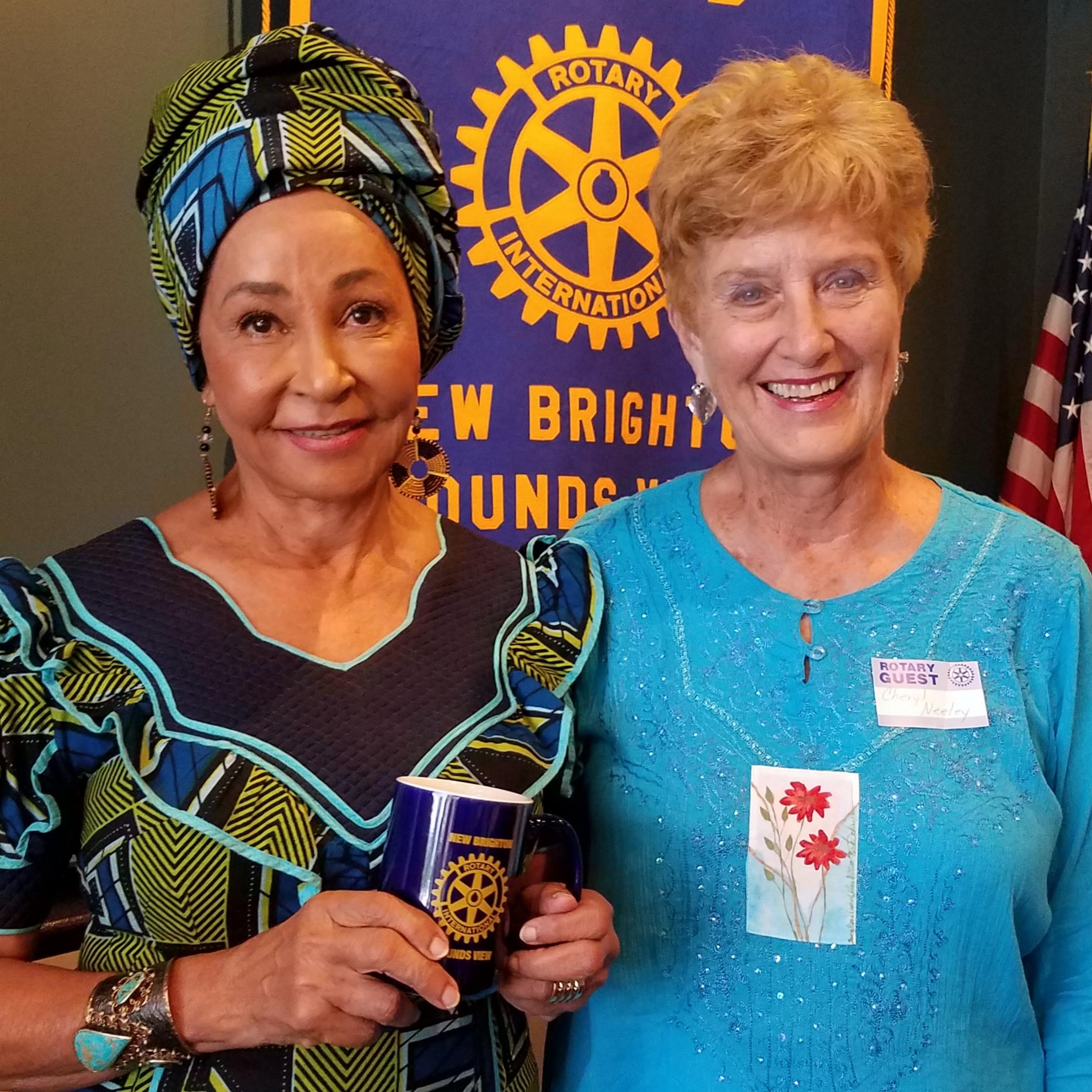We had many guests today to see Maria Nhambu speak; Cheryl Neeley, Ruth Marg Patton, Debbie Connolly and grandkids Mackenzie and Matthew. Also present were: Gretchen, Laura, Polly and Merrilee (last names unknown). Mike and Cheryl’s neighbor and Hopkins Rotarian, Nelson Berg, was also here to see Maria Nhambu.
Nanase, our newly arrived exchange student from Japan, was introduced to the club. Nanase’s sister was an exchange student to New Zealand. Stay tuned for information on how to contact Nanase to arrange activities with her.
Check your email for a list of upcoming events and speakers.
John Johnson is scheduled for induction into the club on September 10th, so let’s have a big turnout to welcome him into the club.
Overall contributions to the Rotary Foundation have lagged recently, so all are urged to consider an additional contribution or an increase in your scheduled quarterly contributions.
Proposed guidelines have been developed for Honorary NBMV Rotarian designation. You should receive the proposal by email today and a vote will be taken at the September 3 club meeting.
Happy Bucks Highlights:
- John Risdall was happy that his brother Robert travelled from Portland for a surprise visit. John was also happy for his son Ted’s 50th birthday.
- Dana Rebelein was happy for two family reunions and for the Twins’ winning ways.
- Mike Neeley was happy that Kenya has now been certified as polio free, making the entire continent of Africa polio free. That leaves just Pakistan and Afghanistan as the only countries remaining to be rid of the scourge of polio.
Cheryl Neeley introduced her friend and author, Maria Nhambu. Maria was born a mixed-race child in Tanzania, East Africa, in 1943. At that time, mixed-race children were not accepted and often placed in orphanages. When she was 3 days old she was delivered to an orphanage where she was raised by German nuns. She was consumed by a desire to search for her mother outside the orphanage which led to frequent beatings by the obedience obsessed nuns. Maria also loved dancing, especially in the native African style, and this resulted in frequent beatings by the nuns who preferred the waltz. Maria was a good student, but education at the orphanage only went through 4th grade. Eventually she got a scholarship to a school 200 miles away which made the orphanage seem heavenly by comparison. After 8th grade, Maria moved to an American-run orphanage which was much less strict than the German one. She flourished there; encouraged by the staff to sing, dance and learn. It was there that she met Kathy, a lay-teacher from Onamia, MN. Kathy (age 23) adopted Maria (age 19) and they returned to Minnesota. This unlikely relationship changed both of their lives. Maria attended St Catherine’s and eventually married a prominent Twin Cities businessman. When Maria was 36, her white birth mother came to the U.S. and reconnected with Maria. After spending much of the early part of her life looking for her mother, Maria was disappointed to find her mother to be cold and distant. She also met her half brother, Larry who was warm and loving, unlike her mother. Her mother refused, even until her death, to disclose the identity of Maria’s father. Maria’s desire to connect with her father led her, and brother Larry, to Tanzania. By an almost miraculous turn of events, Maria actually located her father, who had been the cook for her mother. Her father’s name was Nhambu; and Maria changed her name to honor him.
Maria has written three books about her life experience: Africa’s Child, America’s Daughter and Drum Beats, Heart Beats. Cheryl and Maria are shown below.
